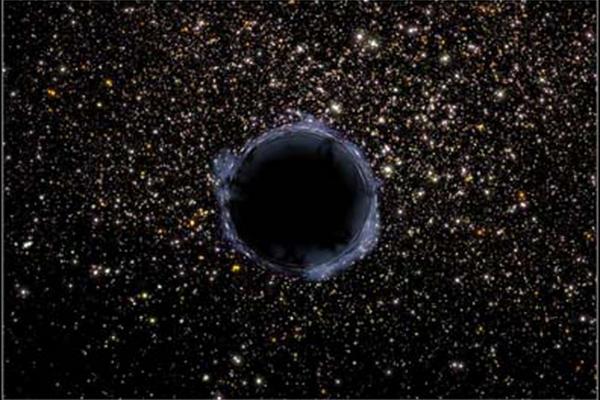Resolving the black hole ‘fuzzball or wormhole’ debate

Black holes really are giant fuzzballs, a new study says.
The study attempts to put to rest the debate over Stephen Hawking’s famous information paradox, the problem created by Hawking’s conclusion that any data that enters a black hole can never leave. This conclusion accorded with the laws of thermodynamics, but opposed the fundamental laws of quantum mechanics.
“What we found from string theory is that all the mass of a black hole is not getting sucked in to the center,” said Samir Mathur, lead author of the study and professor of physics at The Ohio State University. “The black hole tries to squeeze things to a point, but then the particles get stretched into these strings, and the strings start to stretch and expand and it becomes this fuzzball that expands to fill up the entirety of the black hole.”
The study, published Dec. 28 in the Turkish Journal of Physics, found that string theory almost certainly holds the answer to Hawking’s paradox, as the paper’s authors had originally believed. The physicists proved theorems to show that the fuzzball theory remains the most likely solution for Hawking’s information paradox. The researchers have also published an essay showing how this work may resolve longstanding puzzles in cosmology; the essay appeared in December in the International Journal of Modern Physics.
Mathur published a study in 2004 that theorized black holes were similar to very large, very messy balls of yarn – “fuzzballs” that become larger and messier as new objects get sucked in.
“The bigger the black hole, the more energy that goes in, and the bigger the fuzzball becomes,” Mathur said. The 2004 study found that string theory, the physics theory that holds that all particles in the universe are made of tiny vibrating strings, could be the solution to Hawking’s paradox. With this fuzzball structure, the hole radiates like any normal body, and there is no puzzle.
After Mathur’s 2004 study and other, similar works, “many people thought the problem was solved,” he said. “But in fact, a section of people in the string theory community itself thought they would look for a different solution to Hawking’s information paradox. They were bothered that, in physical terms, the whole structure of the black hole had changed.” -By Laura Arenschield
Read More: OSU News
